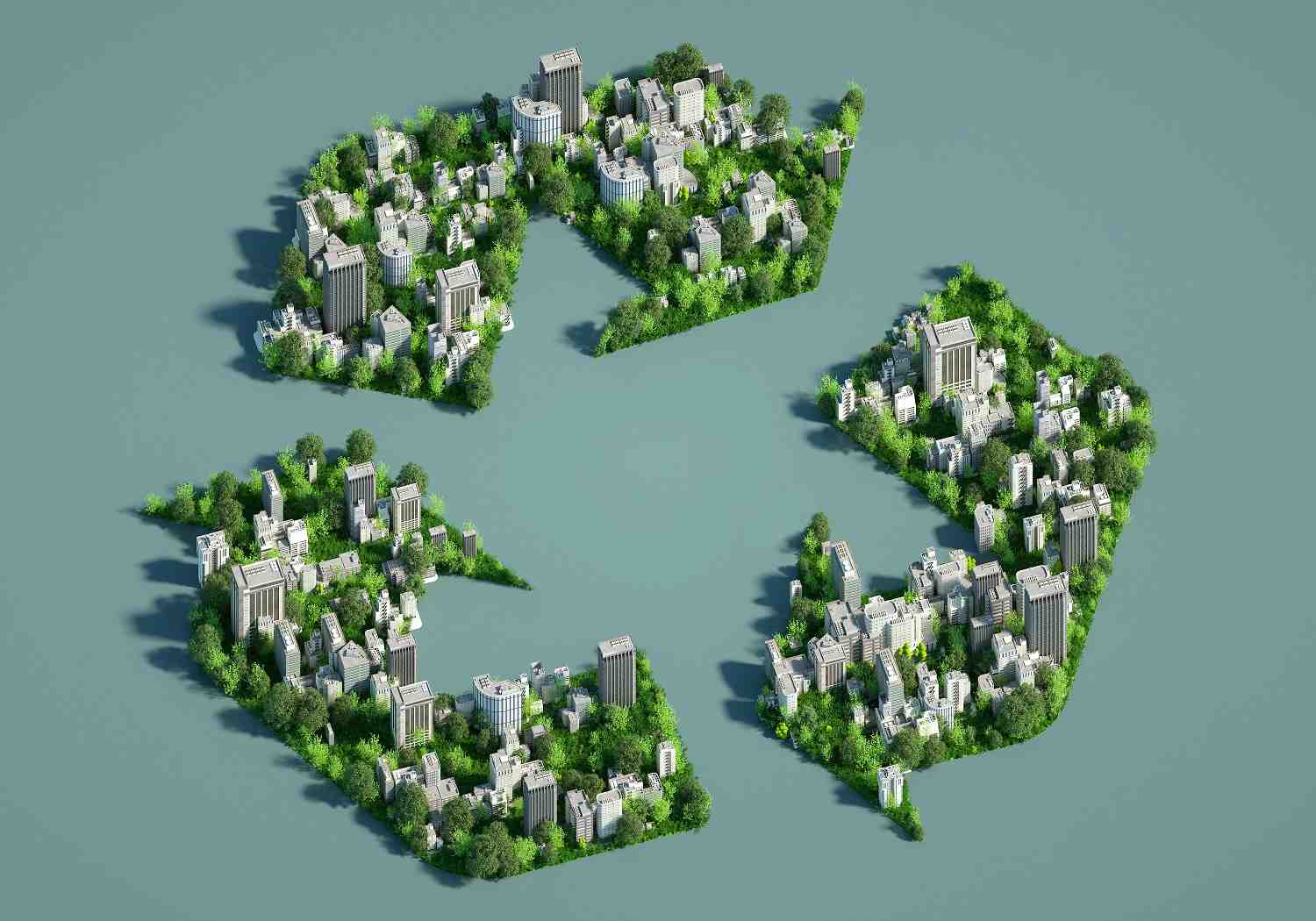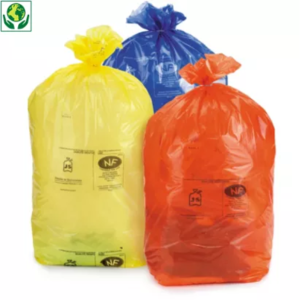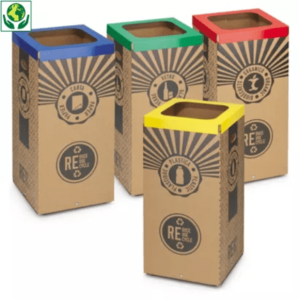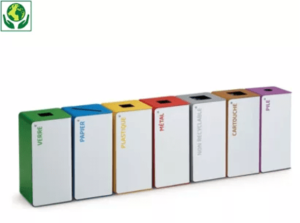If you want to reduce the impact of your logistics activity on the environment, then you are probably interested in the levers of green logistics, also known as sustainable logistics.A green logistics policy applies to all areas of your supply chain: packaging, storage, transport and distribution. This article presents 5 challenges of green logistics and our advice to move towards a more responsible supply chain.
1. Choose more eco-responsible suppliers and service providers
Before working on the environmental impact of your activity yourself, choose partners who are also in the same CSR approach.
Who are the suppliers of your logistics activity?
All along the logistics chain, several actors accompany you thanks to their services
- Energy supplier
- Packaging provider
- Transporters..
for each of these services, you can question the measures taken by your providers.
How do you select a sustainable provider?
What are the brands of a sustainable provider?
- Energy supplier: ask them about their offers, so that you can choose a partially or fully renewable energy supplier.
- Packaging supplier: select a supplier that offers environmentally responsible packaging. At RAJA, we offer various types of sustainable packaging, such as recycled and recyclable cardboard and plastic packaging, packaging made from bio-based materials, and reusable packaging products.
- Transporters: more and more transport professionals are adapting their practices. You can choose transporters who use electric vehicles, or even bicycles at the end of the delivery.

2. Implementing more eco-friendly practices in the warehouse
This is not the issue that is most commonly thought of, yet there are changes that can be made in a warehouse that will make it more eco-friendly.
The drivers of warehouse consumption
There are two main drivers of resource consumption in a physical warehouse
- High energy consumption (especially with lighting)
- Non-optimised storage, which leads to more trips because picking is not optimised either. The equipment wears out more quickly and the lights come on more often when the operators pass by
to
reduce your electricity consumption you can
- Partitioning of spaces with automatic doors that only open when necessary. Heat loss between spaces and the interior and exterior is reduced.
- Review the means of lighting: opt for LEDs, which have a longer lifespan.
- Use renewable energy for lighting and hot water supplies: you can buy from a supplier, or use the surface of your industrial site to install solar panels or wind turbines.
to rework storage you can organise your storage area according to the ABC method which is based on
- The turnover of items: the more a product is ordered, the closer it is to the packing area;
- The weight of your goods: the heaviest items are positioned at the bottom of the racks.
3.
Reducing the environmental impact of your packaging
Packaging: an essential element for your sustainable logistics
The main concern with packaging as we know it today was that it was single-use. However, non-ecological packaging, such as that made of petroleum-based plastic, takes years to disappear into the environment once it has been thrown away. The challenge in logistics is to limit its use, or to use more sustainable packaging.
Eco-responsible packaging: the 5Rs method and eco-design
Here are the 5Rs implemented at RAJA, in order to provide you with packaging that has a limited ecological impact
- Reduce: reduce the weight and volume of your parcels and protect your products without overpacking. This solution limits the use of raw materials and the emptiness of your parcels (generating unnecessary CO2 during transport).
- Reuse: reuse packaging wherever possible, and give preference to packaging designed to be reusable or more durable when purchased.
- Replace: replace packaging with a high environmental impact (such as petroleum-based plastic) with more environmentally responsible alternatives, such as kraft paper or cardboard.
- Renew: remove packaging with a high environmental impact and use more environmentally responsible alternatives instead, such as packaging made from bio-based materials or recycled materials, which still retain the characteristics of the original packaging.
- Recycle: use recyclable packaging as much as possible in order to integrate it into a circular economy approach, ensuring that it has an appropriate end-of-life in existing channels.
4.
Managing waste processing throughout
the
supply chain
As you have seen, packaging is the main waste in a logistics warehouse. Laws, and in particular the Environmental Code, oblige companies to sort and recycle professional packaging.
Waste production in logistics
The main challenges in waste processing are
- Reducing CO2 emissions caused by incineration
- Reducing soil pollution caused by landfilling waste
the
law requires the sorting and recovery of professional waste into 6 distinct streams
the waste of the logistics chain is collected by the local authorities for some, or by a private service provider. To recover the waste, sorting facilities must be made available to employees in the warehouse
 |
Ourwaste separation bags are available in three colours and are practical to use. |
 |
Thanks to their original design, these cardboard recycling bins are easily identifiable. |
 |
The Cubatri waste separation bins are also suitable for use in companies. Their design makes sorting easy and encourages sorting. The “push and pull” opening system makes them convenient to use. |
5.
Réduire l’empreinte carbone de la phase de transport des marchandises
Vous l’avez vu au début de cet article : le transport est l’un des enjeux de la logistique verte. Il s’agit de l’un des moments les plus impactants sur l’environnement de la chaîne logistique, notamment en pollution de l’air (émissions de gaz) et de l’eau (transport maritime).
Voici 3 conseils pour un transport logistique plus écologique :
1 – Planifier une stratégie de transport éco-responsable: déployer des hubs régionaux ou départementaux à la place d’un entrepôt central. Organiser les flux pour utiliser le transport ferroviaire, moins polluant que le routier.
2 – Gérer le transport de palettes: modifier la gestion de votre parc de palettes en optant pour la location, par exemple. Pour inspiration, consultez l’histoire de MagicPallet, solution d’échange de palettes innovante.
3 – Maîtriser la livraison du dernier kilomètre: contributrice de la pollution en ville, son impact peut notamment être
- Bicycle couriers
- Hybrid or electric vehicles
- Collaborative deliveries
green logistics is now a necessity to meet new consumer expectations and regulations. Its challenges are to reduce waste, reduce the use of resources and improve transport management. To find out more: Green logistics: 5 good practices for an eco-responsible warehouse















